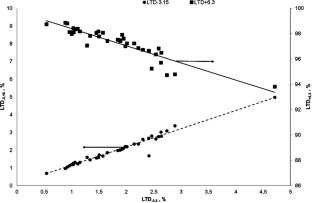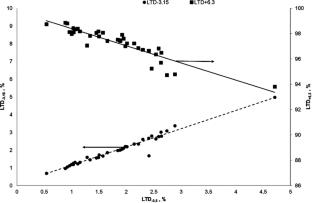Peculiarities of fracture of iron–ore pellets in the course of reduction heat treatment
Abstract
Strength and metallurgical properties of pellets are determined by their structure. Therefore, the problem of investigation of their relationships remains quite urgent. The aim of the present paper is to analyze the specific features of fracture of the pellets in the course of reduction and determine the ratio of different fractions of the broken pellets (fractions +5 mm and −0.5 mm) obtained as a result of high-temperature reduction treatment. We use the experimental methods of investigations. It was discovered that the strength of pellets in the course of reduction decreases down to 0.21±0.40 of the initial compression strength. The minimum level of strength of the pellets is observed for the degree of reduction equal to 20–40%, which corresponds to the maximum level of internal tension in the course of rearrangement of the crystal lattice of iron-ore phases. The yields of reference grain-size fractions in the course of ISO 13930 tests are correlated with each other and, moreover, the yields of the fractions −3.15 and −0.5 are comparable. The fine fracture products are mainly represented by dust formed as an abrasion by-product. The process of cleavage of pellets plays a relatively minor role in their destruction in the course of reduction (at most 50% of the substandard fraction). The grain-size composition of the products of the process of destruction of pellets running in the course of reduction is partially correlated with the fracture products in the cold state: the yield of a fraction of 0.5 mm is correlated for cold and hot strength, while yield of a fraction of +5 mm depends on the specific features of microstructure. If the microstructure is mostly represented by the iron-ore phases (at least 97%), then the pellets are more susceptible to fracture by cleavage accompanied by the formation of a size fraction of −5 mm.



 求助内容:
求助内容: 应助结果提醒方式:
应助结果提醒方式:


